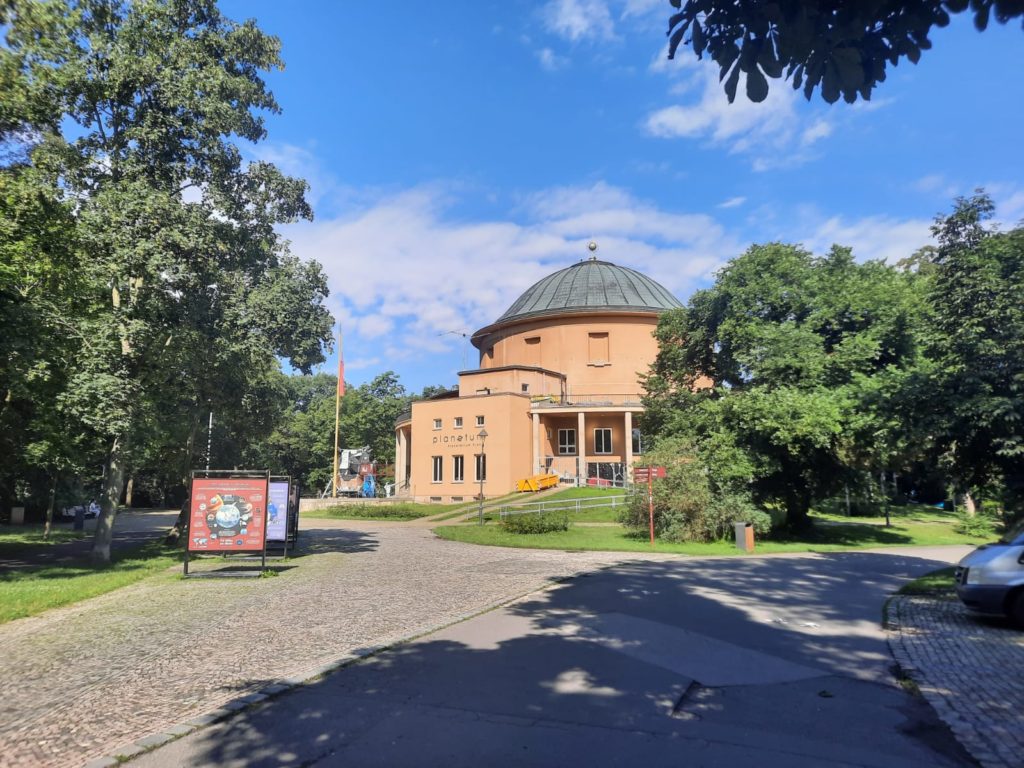Maroldovo Panoráma (Marold’s Panorama), Prague
Let’s get off the beaten track today in Prague with the Maroldovo Panoráma, a charming historic example of a once popular trend.






Marold’s Panorama
I was saying in my last post that a return trip to a city is a nice opportunity to get off the beaten track and see some new and unusual things. It took five trips to Prague for me to get around to the Maroldovo Panoráma, or Marold’s Panorama (I prefer the Czech name so let’s go with that). And even then, it was only because I was staying nearby, doing my daily exercise in the nearby park, and was curious enough to find out more.
In visiting a couple of modern panoramas (here and here), I’ve written a bit about their history. Please indulge me while I briefly recap. Panoramas, in this sense, are a largely 19th century phenomenon. They consist of large painted canvases displayed in circular or hexagonal structures to create an immersive environment. Often the edges of the canvas blend into ridges or props to further extend the illusion. They were popular public attractions, and a few original examples survive including in The Hague, and Wrocław.
The Maroldovo Panoráma dates to 1898. It was painted by Luděk Marold, hence the name. Or mostly painted by Marold. As you can imagine given the size, panoramas were mostly collaborative affairs. Marold worked with landscape painter Vaclav Jansa, colourist Theodor Hilser, and Ludvik Vacatko, a painter of horses. Why horses? Because the panorama depicts the 1434 Battle of Lipany. Know anything about it? No, I didn’t either. But it happened about 40 KM outside Prague, between some dissenting Hussites and Sigismund, the Catholic Emperor of Hungary and Bohemia. It was very bloody, but Sigismund won in the end.






Visiting the Maroldovo Panoráma
My visitor experience here was an interesting one. The Maroldovo Panoráma opens pretty early for a tourist attraction, at 9 AM. I had a busy day planned, so was there before 10. The attendant was out sunning herself (fair enough, there were no other visitors), so followed me in and took my 50 CZK entrance fee (less than £2). I then headed upstairs, while she cranked up the sound system to play an explanatory soundtrack that was all in Czech. I didn’t understand a word, but it was atmospheric.
As you walk up the stairs, there are some historic figures, along with introductions (again in Czech). Most of them are figures from the battle, but Marold is there too. Once upstairs, a visit takes as long as you want it to. It really is a big painting displayed in the round. I spent probably 10 minutes looking at different details and accessing what information was available in English via a QR code. The Maroldovo Panoráma was last extensively restored and renovated (after flooding) between 2002-2004, so I suspect the current presentation dates to then. It’s charming if you like that kind of thing: objects extend the battlefield beyond the frame, but not realistically so.
Although I enjoyed the Maroldovo Panoráma, I wouldn’t recommend it to all Prague visitors. It’s best for those who love historic oddities, or who are already in the neighbourhood. It’s next to Stromovka Park and the Výstaviště exhibition ground (more on these shortly) and not too far from DOX Centre for Contemporary Art. If you do love unusual little historic survivors, I counted it as 10 minutes well spent. Especially when I could head up to the café just above it afterwards for a nice coffee in the sun.
Salterton Arts Review’s rating: 3/5
Read on for more about nearby Stromovka and Výstaviště






Stromovka and Výstaviště
So as I said at the start of this post, I became interested in the Maroldovo Panoráma because I spotted it on a morning run. And while I picked Stromovka and Výstaviště to run in because it was a nearby green space, I quickly realised it had a certain look about it that I recognised. The look of a place built for an exhibition or world’s fair of some kind. You may remember we spent a day in just such a place in Barcelona a while back.
Výstaviště is not quite as grand or extensive as Montjuïc. But it’s interesting nonetheless. It is the site of Prague’s 1891 Jubilee Exhibition. This exhibition came at an interesting time politically for Prague. It was part of the Austro-Hungarian Empire at that time, but we know with hindsight that the Empire was not to remain together for much longer. And a desire for independence for the Czech people was in evidence even then. The Jubilee Exhibition commemorated a century since Prague’s (and possibly the world’s) first industrial exhibition in 1791. For some reason the city’s German population protested against a centenary celebration of that event, and boycotted the Jubilee Exhibition when it was held. I am not sure why other than things were changing, and not in their interests.
Today the Výstaviště grounds, including several historic buildings, are still put to good use. There’s an aquarium, events spaces, a pub with beer garden, a fountain with light shows. And of course the Maroldovo Panoráma. The panorama, and also an outdoor theatre, are just on the border with Stromovka, a large park next to the Vltava River. Stromovka is a lovely urban green space, and contains in its own right a planetarium and a summer chateau. Originally (as in from the 13th century), it was a royal hunting ground.
So there you have it. Heritage everywhere you look, and perhaps some additional incentive to head to this side of the river in Prague and check out the Maroldovo Panoráma and its surroundings!
Trending
If you see this after your page is loaded completely, leafletJS files are missing.

